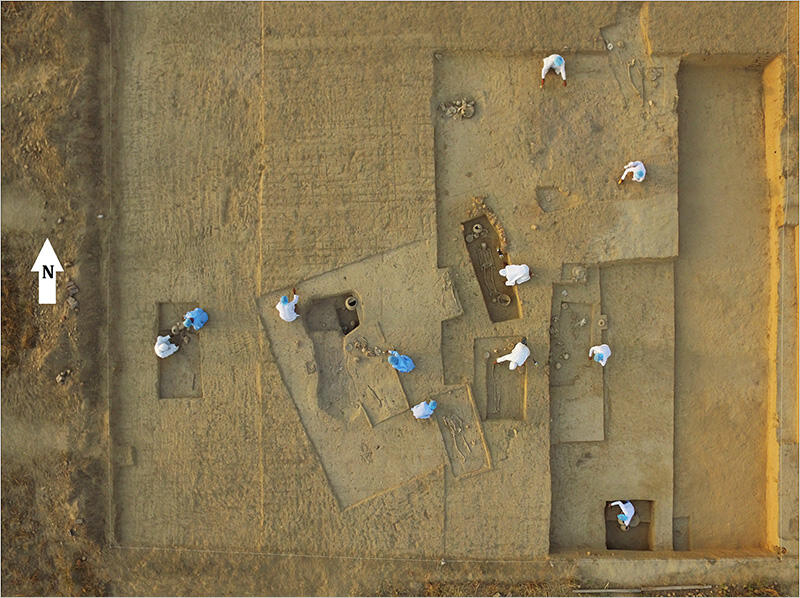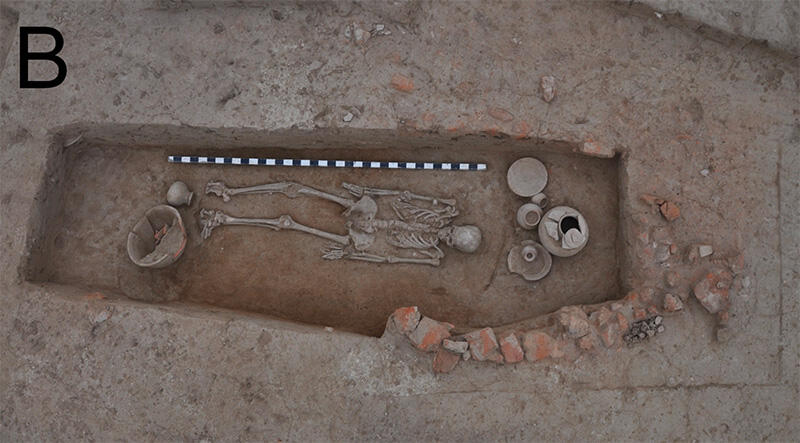A fascinating summary of the first data from the Rakigarhi cemetery that, in the words of the authors, while "insufficient to provide a complete understanding of Harappan Civilization cemeteries, nevertheless does present new and significant information on the mortuary practices and anthropological features at that time. Indeed, the range of different kinds of burials at the Rakhigarhi cemetery do appear indicative of the differences in mortuary rituals seen within Harappan societies, therefore providing a vivid glimpse of how these people respected their dead."
Cemeteries are exceptionally rich sources of data on a civilization. There are the goods that might have been buried or interred with bodies. They offer in terms of material for carbon dating and details of the types of inhabitants (male, female, children) buried. A general picture emerges of how a culture treated their dead and whether there is any indication that they provided goods or valuables for them to use in a possible afterlife. Excavations from 2013-2016 at the Rakigarhi cemetery in Haryana are especially interesting because the published work on other Indus cemeteries is limited, or these have never been found if they existed (e.g. Mohenjo-daro). The authors, from a joint Indian-South Korean team, note: "However, the data from these sites are currently too incomplete to describe how the Harappan people treated their dead in the cemeteries [13–15]. Archaeological efforts on known Harappan cemeteries have also been limited because of their remote locations and the apparently random nature of sites. A further complicating factor has been the action of hydrological and wind erosion flattening the soil pits of burial mounds" (p. 2).
Nonetheless, the evidence from three dozen or so graves excavated allow the authors to come up with a typology of internment types, data on types of people buried, as well as evidence for similar patterns of burial across Indus sites (e.g. the pots at the head of the body as shown in the image above). There were also clearly different kinds of burials, and as always a fascinating tidbit that just might just point to how different ancient Indus society may have been from other ancient and later societies: "We note that every individual discovered in a brick-lined burial was likely, by anthropological examination, to have been female. Therefore, if we accept the hypothesis that the people buried in the brick-lined graves actually belonged to the dominant group in Rakhigarhi society, we must reconsider the social role of some Harappan females at that time" (p. 21).
Images: 1. Fieldwork. Note the protective clothing worn to minimize contamination of samples. 2. Primary atypical burial (A2/BR22) with brick-lined grave architecture.




